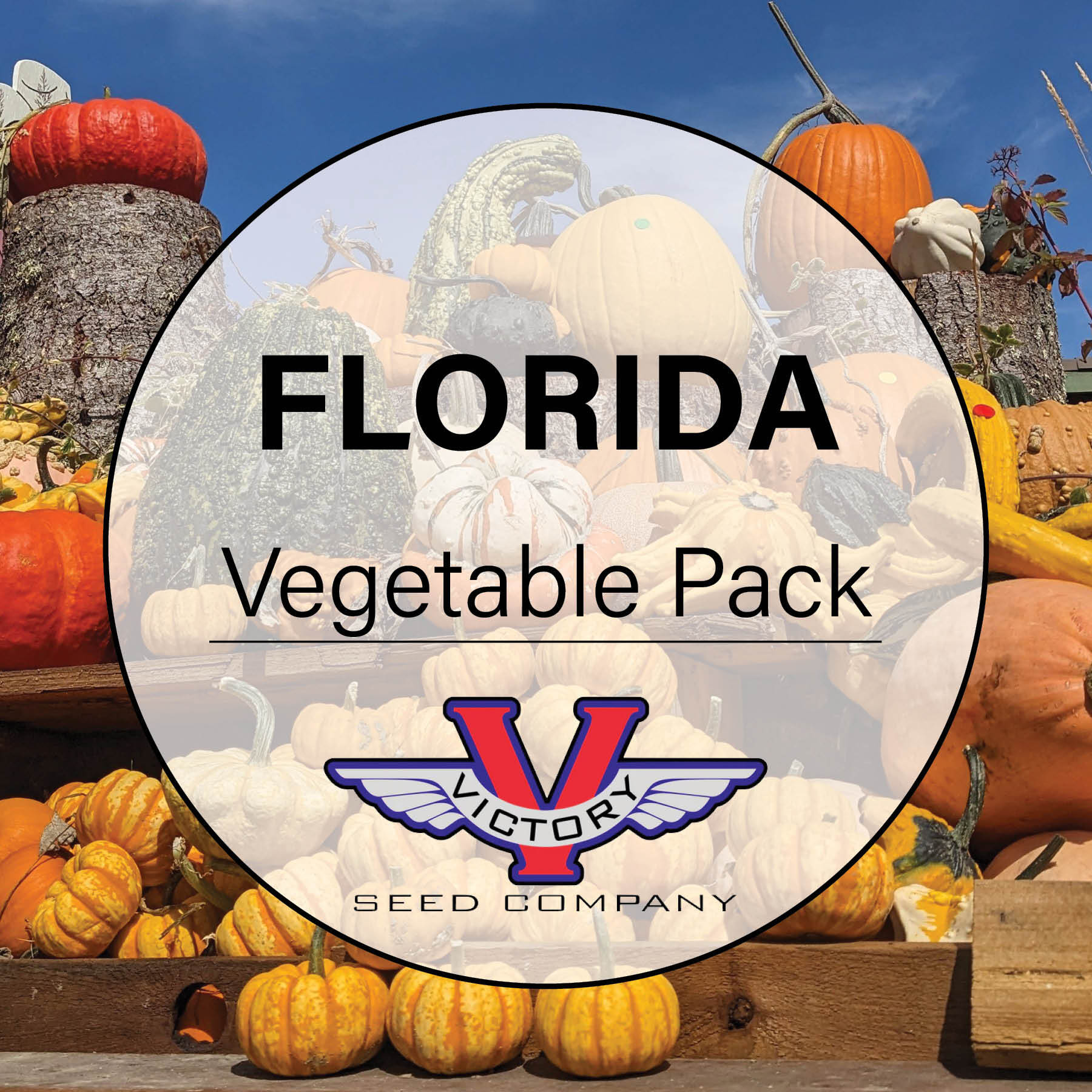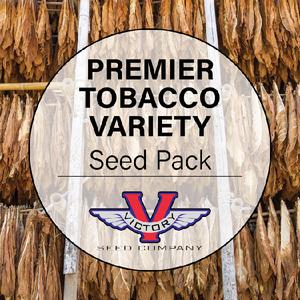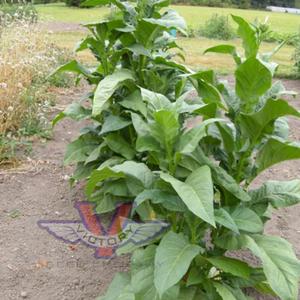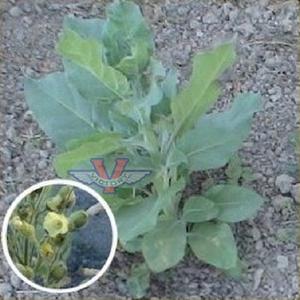Florida Vegetable Garden Pack
Price: $99.95
SKU: 30096041We have chosen our favorite and best-selling varieties for Florida and made them available in this convenient collection.
Place a single order for this item and you will get one packet of each of the items shown below at an overall discount. If you prefer, you can order them individually one by one, by clicking on each item in the list.
 Basil, Italian Large Leaf (Sweet)
Basil, Italian Large Leaf (Sweet)Germination: 5 to 7 days A native to Europe and cultivated for centuries as a fresh and dried culinary herb. Common in America by the late 1700s. The plants grow to about eighteen inches, and provide several harvests. The leaves are used fresh to make pesto, and can be dried and used as a seasoning. A favorite in Italian dishes. Prefers well-drained soil, even moisture, and full sun.
 Blue Lake 274 Bush Green Garden Bean
Blue Lake 274 Bush Green Garden BeanPick the pods while young as they are more tender and succulent and less likely to be stringy. This variety is a canner's favorite as it tends to mature its heavy crop all at once.
 Detroit Dark Red Beet
Detroit Dark Red BeetVery tasty fresh out of the garden, it also maintains its taste and texture well after being canned or pickled. Globe shaped, excellent color, sweet, smooth and tender.
 Di Ciccio Broccoli
Di Ciccio BroccoliAn old European variety Introduced in 1890. Compact, 2 to 3 feet high plants, that produce a central 3 to 4 inch head with many side shoots. Freezes well.
 Catskill Brussels Sprouts
Catskill Brussels SproutsThe 20 to 24 inch tall plants produce heavily. The sprouts are large (up to 1¾ inches), dark-green and firm. Used for fall harvests, it is good fresh or frozen. Developed in 1941.
 All Seasons Cabbage
All Seasons CabbageAlso known as 'Vandergaw', this variety is heat resistant, fine-flavored and produces good, hard heads that are ten inches in diameter, average about 12 pounds and are round but flattened on top. Released in 1886.
 Scarlet Nantes Carrot
Scarlet Nantes CarrotOutstanding for flavor, this strain has a strong top with four to five inch semi-tapered roots.
 Snowball Self-Blanching Cauliflower
Snowball Self-Blanching CauliflowerA snowball-type with leaves that curl in the cool fall weather and cover the head to keep the white color. They do not require tying until the heads are six to eight inches across.
 Perpetual Swiss Chard
Perpetual Swiss ChardLeaves are smooth, dark-green in color with fine midribs. It is very vigorous and provides an almost "perpetual" harvest. If you garden in an area with a hot climate, it is a great choice for a continuous supply of tasty summertime greens.
 Georgia (Southern) Collards
Georgia (Southern) CollardsHeat and cold tolerant and slow to bolt. Non-heading, juicy blue-green wavy leaves will stand light freezing which improves the cabbage-like flavor. Plants grow two to three feet tall.
 Golden Bantam, Improved 12-Row Sweet Corn
Golden Bantam, Improved 12-Row Sweet Corn'Improved Golden Bantam' is an improved version of the old standard yellow sweet corn. Instead of eight rows, this variety has ten to fourteen rows and the ears are slightly longer. It was improved to stay tender longer.
 Ashley Cucumber
Ashley CucumberAn early variety with productive vines and dark green fruits that are 7 to 8 inches long, tapered on the stem end. An excellent slicing variety.
 Big Max Pumpkin
Big Max PumpkinThe bright yellow orange flesh is three to four inches thick. Suitable for pies. They will commonly grow to fifty to seventy pounds and with some attention, will surpass one hundred pounds. Big Max needs plenty of room to grow.
 Early Prolific Straightneck Summer Squash
Early Prolific Straightneck Summer SquashBest harvested (our opinion) when the fruit is five to six inches long and still tender. Mature size is 12 to 14 inches.
 Black Beauty Zucchini Summer Squash
Black Beauty Zucchini Summer SquashThe bush-type plants of 'Black Beauty' zucchini are early and very productive. Although you can use this summer squash at just about any size, we start picking fruit when they are about six to eight inches long by two inches in diameter and dark green in color. We prefer them at this young and tender stage when they are excellent lightly steamed, sautéed, or stir-fried. They reach a black-green to almost black at maturity.
 Florida Market Eggplant
Florida Market EggplantPlants grow 30 to 38 inches. Large purple bell-shaped fruits. A popular variety in the southern United States.
 Arugula
ArugulaAlso known as rocket or roquette and is popular in Italian cuisine. Adds an interesting tangy flavor to an otherwise bland salad. All plant parts are edible and harvest is enjoyed over a long period as it is a cut and come again plant. It prefers cool weather so start sowing successive plantings directly in the garden as soon as the soil can be worked in the spring. Also try an early to mid-fall planting in a cold frame or greenhouse for harvest throughout the winter. Sow seed ¼ inch deep in a location that receives full sun to partial shade. Best soil temperatures for germination is 40 to 50ºF. Sow about one inch apart thinning plants to a spacing of about six inches. Harvest when the leaves are 2 to 3 inches long.
 Dwarf Blue Curled Scotch Kale (Vates)
Dwarf Blue Curled Scotch Kale (Vates)The leaves are finely curled, bluish green, low growing at twelve to fifteen inches tall with a spread of twenty four to thirty inches. It stands well and is hardy.
 Early White Vienna Kohlrabi
Early White Vienna KohlrabiStandard home garden and market variety. The skin pale green and the flesh is creamy-white. These are best enjoyed when they are 2 to 2-½ inches in diameter, before they become woody.
 Broad London (Large American Flag) Leek
Broad London (Large American Flag) LeekThick sturdy stalks with pearly-white bulbs. Popular main season variety.
 Buttercrunch Bibb Lettuce
Buttercrunch Bibb LettuceLong lasting, heat tolerant, dark green with reddish tints. The heads are rosette shaped with thick leaves. Introduced in 1963 and an "All-American Selection®" winner the same year.
 All The Year Round Butterhead Lettuce
All The Year Round Butterhead LettuceMedium-sized heads stay firm and solid even in hot weather. Can be sown in most locations from about March through August for a nearly "year-round" harvest periods. It does well in both hot and cooler locations.
 Planter's Jumbo Melon
Planter's Jumbo MelonThe vines are vigorous, mildew resistant, and do well in drought or high rainfall. Fruits have a firm rind with light ribs and thick, orange flesh, averaging four or five pounds. Released in 1954.
 Old Fashioned Mustard Greens
Old Fashioned Mustard GreensThe plants grow up to two feet in height and produce medium-sized, long ruffled leaves. It is regarded as one of the tastiest varieties of mustard greens.
 Clemson Spineless 80 Okra
Clemson Spineless 80 OkraAn "All-America Selection®" winner in 1939. Plants are 3 to 5 feet with deep-green, straight, spineless, ribbed, 6 to 9 inch pods.
 Heshiko Japanese Bunching Onion
Heshiko Japanese Bunching Onion'Heshiko', also known as 'He Shi Ko', it is a non-bulbing, Japanese bunching onion popular in Asian cuisine. Its stalks are tender, reach twelve to fourteen inches tall, are flavorful, mild, not overly pungent, and a good variety for both home and market gardeners.
 Italian Parsley
Italian ParsleyPlants have deeply cut, dark green leaves with a rich, strong flavor; generally stronger in flavor than the curled types. Excellent for flavoring. Parsley has been cultivated for centuries and is used as a garnish, palate cleanser, flavoring in soups, salads, as a seasoning in other recipes, and medicinally.
 Sugar Snap Pea
Sugar Snap PeaYoung pods are tasty and tender but develop strings at maturity. Vines can reach 6 feet and need trellised. Freezes well but will not stand up to canning temperatures. Released in 1977 and was an "All-America Selection®" winner in 1979.
 Jalapeno Hot Pepper
Jalapeno Hot PepperThe fruit are dark green, tapered, three inches by one inch, turning red when mature. Good for pickling or used fresh in salsas. They have thick walls so do not dry well. They can range from 2,500 to 10,000 Scoville units in heat.
 California Wonder (Bell) Pepper
California Wonder (Bell) PepperThe plants are upright, strong, and produce four or five fruits that are mostly four-lobed, blocky, and 4 by 4½ inches with thick flesh that is mild and sweet.
 Watermelon Radish
Watermelon RadishThe roots are large with white skin and tender, sweet, bright-red interiors.
 White Acre Southern Pea
White Acre Southern PeaThis old mid-Atlantic heirloom cream pea matures early and produces over a long period of time. It is a great choice for home gardening and for fresh eating. The plants are large and bushy with some runners. The peas are small, creamy white in color, and excellent tasting.
 Bloomsdale Longstanding Spinach
Bloomsdale Longstanding SpinachLeaves are dark green and crumpled. Stands well in hot weather. Named after their farm in Bristol, PA, D. Landreth & Co. released 'Bloomsdale' in the 19th century. 'Long Standing Bloomsdale' was developed and introduced in 1925 by Zwaan and Van der Molen, Voorburg, Netherlands.
 Sunflower, Giant Greystripe
Sunflower, Giant GreystripePlanting Instructions: Sunflowers are very easy to grow and because of their size, quite spectacular for a child's garden. Sow directly outdoors, ¾ inches deep. Thin the plants at first to 8 inches and then to two feet to avoid crowding. (We have had good luck transplanting) Water regularly and weed between the plants to eliminate competition. Harvest the seeds by cutting the flowering heads when the backs have turned yellow. Complete the drying by hanging them upside down in a warm, dry place. Scan the QR code below for more information.
 Cherokee Purple Tomato
Cherokee Purple Tomato80 days, indeterminate — Reportedly grown by the Cherokee Indians. Large fruits (up to a pound), dark pink with darker shoulders. Excellent flavor and a slight sweet aftertaste.
 Everglades Tomato
Everglades Tomato80 days, indeterminate — Sow seeds indoors, using sterile seed starting mix, 6 to 8 weeks prior to your last expected frost date. Plant seeds ¼ inch deep, water lightly and until they emerge, which can take 14 to 21 days, and do not allow the soil to dry out.
 Purple Top White Globe Turnip
Purple Top White Globe TurnipRound roots that are bright purple on the upper part and white below. The globes grow four to five inches in diameter but are best when harvested a little smaller.
 Florida Giant Watermelon
Florida Giant WatermelonThe fruits are nearly round, fifteen or more inches in diameter and can reach sixty pounds. The skin is smooth, thick and tough and a dark green color. The flesh is bright red, firm and sweet.
Customer Reviews:
Do you have experience with this one? 📝 📣 Write a review!
No reviews have been posted yet.




